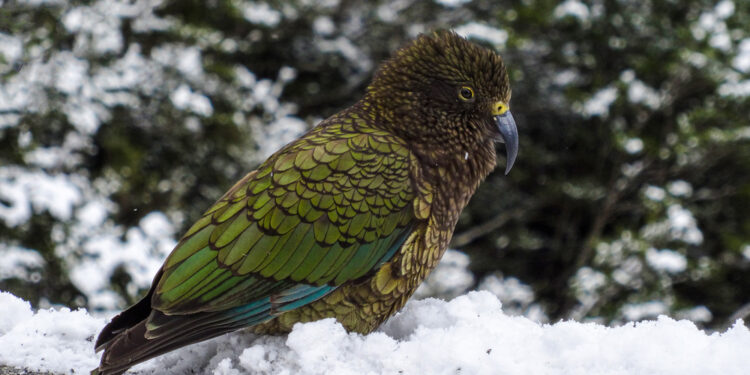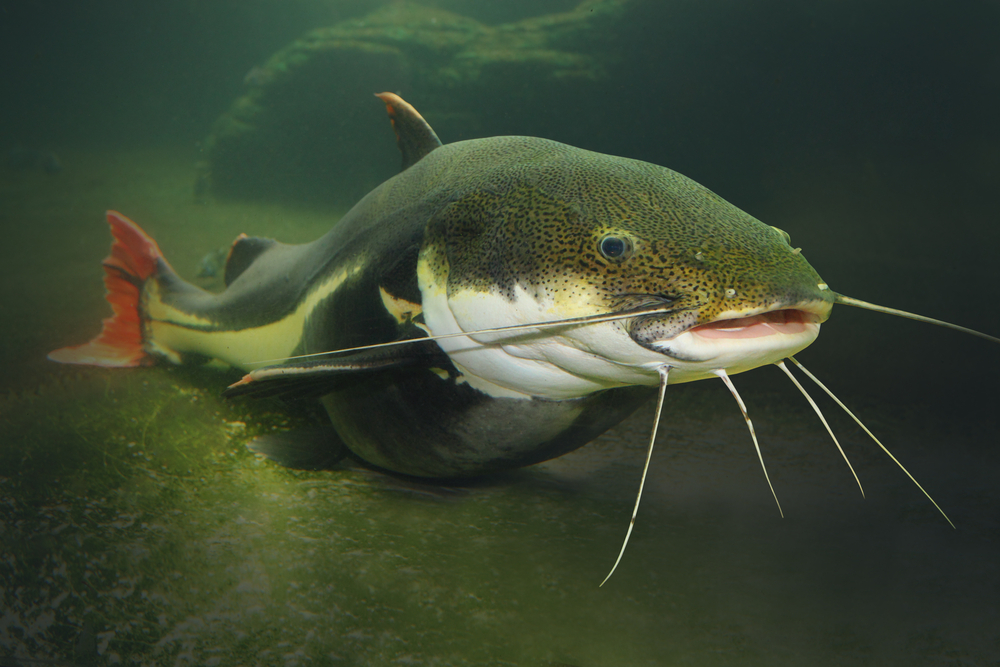Deep in the nocturnal heart of New Zealand’s remote forests, a peculiar parrot, unlike any other, makes its dwelling. This is the domain of the kakapo (Strigops habroptila), an extraordinary bird that defies the traditional avian archetype with its flightless nature, nocturnal habits, and unusually long lifespan. With its engaging oddities, the kakapo weaves a fascinating tale of survival, adaptation, and conservation that deserves our attention.
A member of the parrot family, the kakapo is an anomaly in many respects. It is the only species within its genus Strigops, and unlike most of its avian cousins, the kakapo is incapable of flight. This large, robust bird possesses relatively short wings that, rather than facilitating aerial acrobatics, have adapted to the bird’s terrestrial lifestyle, aiding in balance and providing a soft landing during its impressive leaps among the forest undergrowth.
Another unusual aspect of the kakapo is its nocturnal behavior. While the majority of parrots are diurnal, the kakapo is a creature of the night, a habit developed as a survival strategy to evade day-active predators. The bird’s mottled moss-green plumage serves as an effective camouflage against the leafy forest floor, allowing it to blend seamlessly into its surroundings.
What perhaps sets the kakapo apart most significantly from other birds is its extraordinary lifespan. Most parrots are known for their longevity, but the kakapo outdoes them all, with some individuals documented to have reached 90 years. This longevity, combined with the kakapo’s slow rate of reproduction, has significant implications for the bird’s conservation.
The kakapo’s life in the wild is filled with unique behaviors and habits. The males are known for their booming calls, a part of their lek breeding system, where they compete for the attention of females by producing resonant, low-frequency sounds that can travel great distances through the dense forest. These solitary birds also have a strong scent, described as a cross between honey and the inside of a clarinet case, making them one of the few parrots with a distinctive odor.
Sadly, the kakapo’s fascinating characteristics also contribute to its vulnerability. Its flightless nature, ground-dwelling habits, and strong scent make it an easy target for introduced predators like cats, stoats, and rats. Furthermore, its slow breeding rate and long lifespan mean that the loss of each individual kakapo has a significant impact on the population’s genetic diversity and sustainability.
Once widespread throughout New Zealand, the kakapo population suffered dramatically upon the arrival of humans and the predators they brought with them. By the 1970s, it was feared that the kakapo was extinct. However, in a twist of hope, a small population was discovered on Stewart Island off New Zealand’s southern coast.
Since then, the kakapo’s story has been one of intense conservation efforts. The Kakapo Recovery Programme, established in 1990, has employed innovative techniques such as supplementary feeding, artificial incubation of eggs, and hand-rearing of chicks. It has also pioneered the use of technology in conservation, with radio transmitters and smart transponders used to monitor the birds and their environment closely.
The conservation journey of the kakapo has been a roller-coaster ride of highs and lows, marked by successful breeding seasons and heart-breaking losses. While the population remains critically endangered, the dedicated efforts of researchers, conservationists, and volunteers have seen the kakapo numbers slowly rise above 200 for the first time in decades.
The kakapo’s tale is not just a story about a peculiar, flightless parrot. It is a testament to the resilience of nature and the dedication of those committed to its preservation. As we strive to protect this unique creature, the kakapo teaches us valuable lessons about our role as stewards of the planet. Its story is a poignant reminder of the fragile balance of biodiversity and the profound impact our actions can have on the world’s most vulnerable species.
The kakapo, with its quirks and charms, stands as a symbol of the intricacies of evolution and the wonder of nature’s diversity. And it remains a beacon of hope, exemplifying how concerted conservation efforts can make a difference, even for a species on the brink of extinction. As we move forward, the story of the kakapo continues to inspire, reminding us of our responsibility and capacity to safeguard the earth’s remarkable biodiversity for generations to come.







